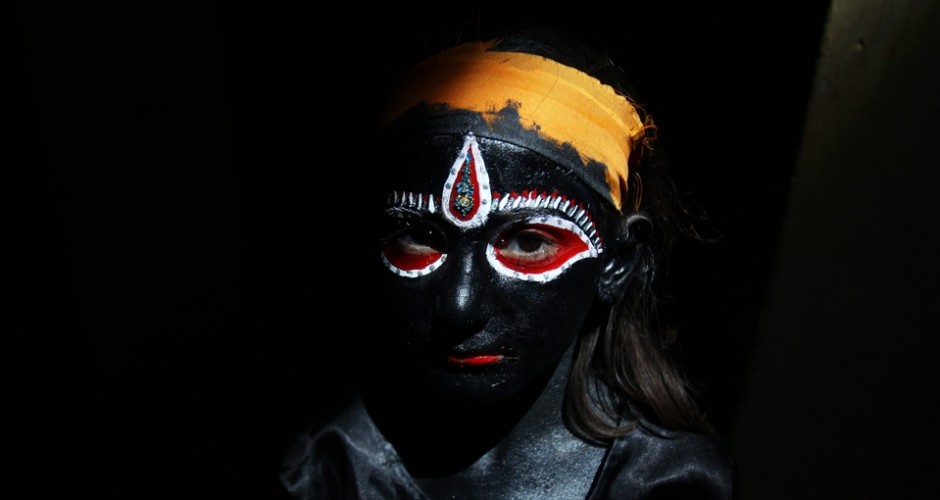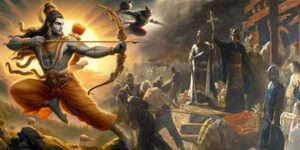In these last centuries the world has changed remarkably, and today we are facing even deeper and wider changes than ever – changes we cannot avoid, because human society is becoming increasingly globalized.The history of Vedic tradition teaches us that as human beings, we have the power to participate in this change responsibly, by directing it consciously in the best possible way, for the good of all creatures and the progress of the universe.
 The ancient Rishis, to whom we owe an immense debt, have shown us the firmament, the splendid stars that shine immovable in the sky, to help us keep a clear vision of what needs to remain stable in a world that is constantly moving around. The word “firmament” itself derives from the adjective “firm”, meaning “which does not move”.
The ancient Rishis, to whom we owe an immense debt, have shown us the firmament, the splendid stars that shine immovable in the sky, to help us keep a clear vision of what needs to remain stable in a world that is constantly moving around. The word “firmament” itself derives from the adjective “firm”, meaning “which does not move”.
One of the most important symbols of Vedic culture – the svastika or “auspicious symbol”- is found at the base of all the ancient civilizations of human kind, and it represents specifically this central firmness of the eternal and universal principles of the natural ethical religion (Sanatana Dharma) in the constant and cyclic revolution of the universe.
Whether this symbol can be applied to the Sun, to the Polar Star, or to the Directions of the universe, still the teaching shows us a “center of permanent gravity” that all human beings share and depend on.
Today, after 13 centuries of hostile alien infiltration in Bharata varsha and even a greater number of centuries of Kali yuga, we are facing a dangerous situation, where ignorance and prejudice have taken the place of genuine knowledge and wisdom.Many people are legitimately criticizing what they call “dogma” and “outdated ideas” that are now irrelevant or even detrimental to the proper application of the fundamental principles of Dharma: satya (truthfulness), daya (compassion), sauca (purity) and tapas (self control) – the four legs of the Sacred Bull that Maharaja Parikshit found harassed and wounded by the age of Kali.
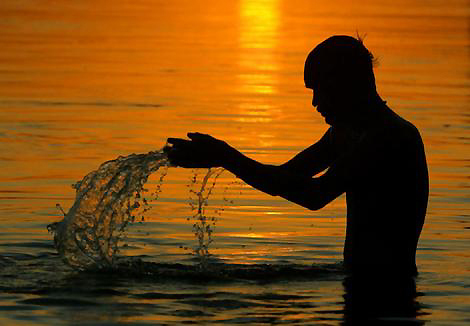 However, such outdated and detrimental ideas are often described as “orthodox Hinduism”, or “the age-old Tradition”, when in fact they are very much recent distortions created by the superimposition of those same hostile alien cultures that are still attacking us today to destroy whatever is left of Hinduism in Bharata varsha.These abrahamic influences have infiltrated so deeply into the Indian psyche that many people are unable to separate them from Hinduism itself, and they even present them as the very basis of “Hindu morality” or “Hindu tradition”.
However, such outdated and detrimental ideas are often described as “orthodox Hinduism”, or “the age-old Tradition”, when in fact they are very much recent distortions created by the superimposition of those same hostile alien cultures that are still attacking us today to destroy whatever is left of Hinduism in Bharata varsha.These abrahamic influences have infiltrated so deeply into the Indian psyche that many people are unable to separate them from Hinduism itself, and they even present them as the very basis of “Hindu morality” or “Hindu tradition”.
Thus a monster is created – a bastardized creature that has given Hinduism and Vedic culture such a bad name at global level, and created many enemies out of people who could have been very valuable assets for a dharmic society – who wanted to be helpful members of our dharmic society, but were turned down and humiliated and mistreated in the name of absurd prejudice presented as the “age-old Tradition” when it actually violated all the principles of Dharma and the teachings of the ancient Rishis.Among such dangerous enemies, I could mention Ambedkar or Kalapahada, which many of our members probably know by fame.
If we do not vanquish and neutralize this monster today, by re-establishing the proper knowledge and understanding of Vedic culture, and by rallying all dharmic people under the true banner of Sanatana Dharma, we will be defeated in the impending Kurukshetra of our times.
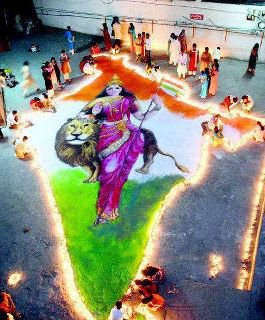 The battlefield of Bharata varsha is the last strong-hold of Dharma, that was once thriving at global level as many are now realizing from archeological evidence, and if the armies of Dharma are defeated here, even the brave attempts to reconstruct dharmic cultures in the rest of the world will ultimately fail. As the heart of Dharma – the sacred land of Bharata – is ravaged and polluted, the entire planet will suffer for the disaster, and finally succumb to the asuric forces.
The battlefield of Bharata varsha is the last strong-hold of Dharma, that was once thriving at global level as many are now realizing from archeological evidence, and if the armies of Dharma are defeated here, even the brave attempts to reconstruct dharmic cultures in the rest of the world will ultimately fail. As the heart of Dharma – the sacred land of Bharata – is ravaged and polluted, the entire planet will suffer for the disaster, and finally succumb to the asuric forces.
More and more people are starting to realize the gravity of the situation, and revolting against the asuric oppression, but they are confused and afflicted by severe shortcomings in knowledge and realization of that very same Vedic culture they want to defend.
It is therefore imperative for all the leaders of this Dharmic Resurgence – kshatriyas and especially brahmanas – to equip themselves with the divine weapons of knowledge and wisdom. The Sanskrit words for “weapon” and for “scriptures of knowledge” are amazingly similar, and references to the “sword of knowledge” are found in many recognized texts and teachings.
So let’s see what is the actual traditional corpus of knowledge that we have received from our elders:
1. sruti (the original and eternal Vedic knowledge)
2. smriti (the “memories” about the application of this knowledge)
3. bhasya or tika (the commentaries on the knowledge and its applications)
4. laukika sraddha (the “popular beliefs” that have been accumulating for centuries)
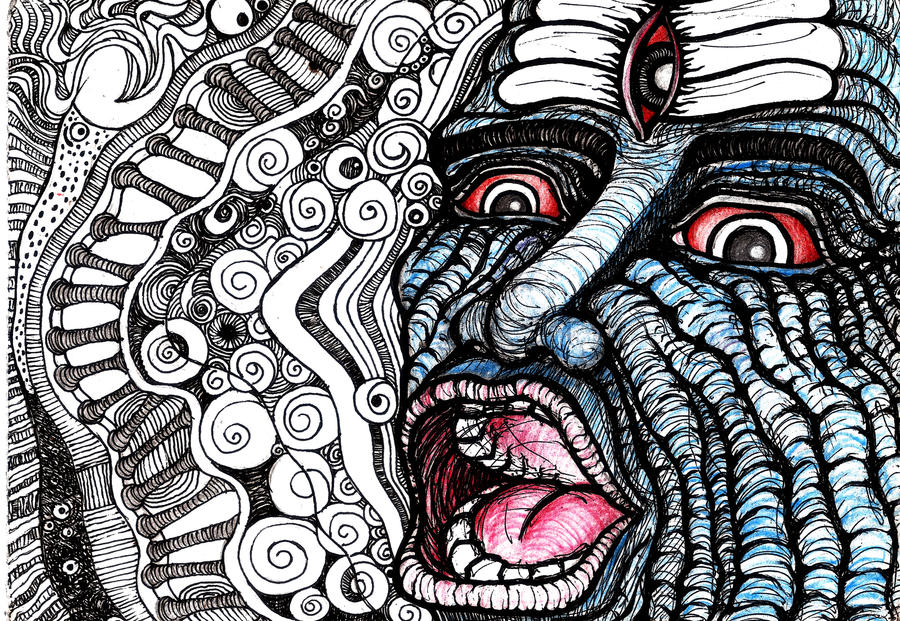 Most Hindus are unable to distinguish among these four limbs of knowledge, and many even among those who are considered religious or academic authorities on Hinduism could confuse one with the other, or give all of them equal importance and value, or even – influenced by Kali yuga – give a greater importance to those limbs that are actually less important.
Most Hindus are unable to distinguish among these four limbs of knowledge, and many even among those who are considered religious or academic authorities on Hinduism could confuse one with the other, or give all of them equal importance and value, or even – influenced by Kali yuga – give a greater importance to those limbs that are actually less important.
The laukika sraddha or popular beliefs are most responsible for the mess we are facing today.It was on the basis of popular beliefs (casteism and birth prejudice, prude moralism, sectarian allegiances, disrespect for women, excessive tolerance for adharmic behaviors and conclusions, fearful conformism, cowardice, etc) that Hindus have unnecessarily created such a bad image for their own tradition, and made so many enemies among virtuous people.
All these adharmic popular beliefs – that are contrary to truthfulness, compassion, purity and self-control – are in open violation of the original teachings of the sruti shastra, and contradict the meaning of the genuine smriti shastra, and the purpose of the bhasyas produced by the great mahajana acharyas.Such popular beliefs are a mortal disease and must be eliminated, otherwise their accumulated toxic pollution will kill us.To eliminate, we need to return to the ORIGINAL KNOWLEDGE AND UNDERSTANDING OF THE SRUTIS.
After we have properly studied the srutis, we will become able to understand the smritis and the teachings of the great acharyas.We need to be able to distinguish the baby from the bath water.Otherwise we may end up throwing out the baby with the bath water, or even worse, throwing the baby out as garbage, and lovingly keeping the dirty bath water in the house, showing it proudly to family, friends and visitors as “our precious treasure”.
We need to challenge the ignorant propounders of laukika sraddha (including the so-called swamis, elders and “religious authorities”) to BRING SCRIPTURAL EVIDENCE FROM SRUTI about their stupid and detrimental beliefs.
They won’t be able to.
I remember one “brahmin” in an internet discussion group posting a panicking query, asking his fellow “brahmins” where he could find actual quotes in the shastra about the absolute value of jati in regard to varna (as in the caste distortion) BECAUSE HE HAD BEEN UNABLE TO FIND EVEN ONE.Nobody can find such quotes, simply because they do not exist.Rather, all the GENUINE authorities keep repeating that jati is only one factor, but without the proper guna and karma, one can never be recognized as brahmana.
Not only that: jati means that one can be considered a “born brahmana” if he is the son of a brahmana – but if the father is an ignorant debauchee devoid of qualifications and engaged in adharmic activites, and has abandoned his duties, the son can hardly claim to have been “born from a brahmana father”.
 A similar dangerous confusion is polluting the minds of the population in regard to SEXUAL MORALITY.To those who have actually studied the abrahamic ideologies and history, and the Vedic ideology and history (especially through the Puranas and Itihasas) or even just seen the temples and Deities that pre-date the abrahamic invasions, it is clear that the prude morality and the disrespect towards women and nature exhibited by many “hindoos” today have absolutely nothing to do with the Vedic culture or knowledge, but they are actually diseases contracted through the abrahamic infection.
A similar dangerous confusion is polluting the minds of the population in regard to SEXUAL MORALITY.To those who have actually studied the abrahamic ideologies and history, and the Vedic ideology and history (especially through the Puranas and Itihasas) or even just seen the temples and Deities that pre-date the abrahamic invasions, it is clear that the prude morality and the disrespect towards women and nature exhibited by many “hindoos” today have absolutely nothing to do with the Vedic culture or knowledge, but they are actually diseases contracted through the abrahamic infection.
The other dangerous misconception inherited by abrahamic ideologies is the UNQUESTIONABILITY OF ESTABLISHED FIGURES OF AUTHORITY AND THEIR TEACHINGS.This is precisely the meaning of DOGMA.
There is absolutely no endorsement or validation of such idea in the original Vedic culture.The great acharyas have constantly discussed and re-discussed (through their bhasyas and their practical application in their sampradaya or group/lineage) the previous interpretations and applications, TO PRESENT THE ETERNAL VEDIC KNOWLEDGE in a way that was most suitable for the new times. This concept is called YUGA DHARMA.The eternal and universal dharma (sanatana dharma) must be applied in a suitable way according to the historical circumstances (yuga dharma) and according to the particular qualifications and tendencies of the individual (varna dharma or sva dharma).
 This is the way established by the Rishis, the eternal and universal way, that all true followers of the Sanatana Dharma must know and realize in their own life. This is the VEDA. The word “Veda” means “Knowledge” and has the same eternal and universal meaning in all ages, because it applies to the fundamental reality of existence, the cosmos, the laws of nature, the nature of consciousness, and human potential.
This is the way established by the Rishis, the eternal and universal way, that all true followers of the Sanatana Dharma must know and realize in their own life. This is the VEDA. The word “Veda” means “Knowledge” and has the same eternal and universal meaning in all ages, because it applies to the fundamental reality of existence, the cosmos, the laws of nature, the nature of consciousness, and human potential.
All the later presentations – by the contemporary swamis or gurus, by the protagonists of the Hindu revival under the British government, by the medieval acharyas such as Madhva, Ramanuja, etc, by Chaitanya and by Shankara, and even by Vyasa himself – are temporary.
According to the vedic texts themselves, Vyasa compiled the present samhitas and the immediate commentaries known as sruti (the most fundamental and permanent expression of vedic knowledge in written form) not earlier than 5,000 years ago, in a special form destined to the people of Kali yuga.
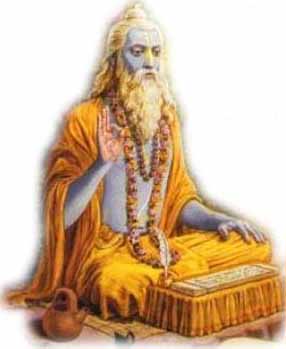 But this Vedic Knowledge in itself is eternal and universal, and as Vyasa himself clearly states, it existed before him, and even before this cycle of creation.We must learn fo separate this Sanatana Dharma and eternal Vidya from the TEMPORARY MANIFESTATIONS of dharma and circumstantial knowledge: this is the message given by Krishna at the conclusion of his teachings in Bhagavad gita: sarva dharman parityajya (18.66)
But this Vedic Knowledge in itself is eternal and universal, and as Vyasa himself clearly states, it existed before him, and even before this cycle of creation.We must learn fo separate this Sanatana Dharma and eternal Vidya from the TEMPORARY MANIFESTATIONS of dharma and circumstantial knowledge: this is the message given by Krishna at the conclusion of his teachings in Bhagavad gita: sarva dharman parityajya (18.66)
When we speak of dharman instead of dharmam, we are indicating a plurality that applies to the SECONDARY MANIFESTATIONS of the ONE ETERNAL UNCHANGEABLE REALITY.Therefore we need to separate the MULTIPLICITY from the ONE REALITY, and learn to see the One Reality in the various manifestations of Multiplicity. This is called REALIZATION.
Without this realization – a major paradigm shift also called enlightenment or prakasha – all the “religious stuff” will remain an empty basket and a cat.
There is a famous story that circulates in several versions in various disciplic traditions – about the cat and the basket.
 In one ashram there was a cat.The animal was not disturbing the ashram dwellers and was useful as he kept mice away. However, he became very interested and excited when the arati was performed, so he used to run around in the temple room and disturb the function.So the head of the ashram ordered a basket to be put over the cat, to immobilize it and keep the quiet during the ceremony.This became a habit, so at every arati the ashram servant prepared a “cat basket” aside together the other arati paraphernalia.When the cat died, another cat was acquired, but he was not interested in the arati. However, since the “ritual” called for a “basket over the cat”, the pujari actually went to catch the cat and take it forcibly to the temple room, then cover it with the basket for the duration of the arati.
In one ashram there was a cat.The animal was not disturbing the ashram dwellers and was useful as he kept mice away. However, he became very interested and excited when the arati was performed, so he used to run around in the temple room and disturb the function.So the head of the ashram ordered a basket to be put over the cat, to immobilize it and keep the quiet during the ceremony.This became a habit, so at every arati the ashram servant prepared a “cat basket” aside together the other arati paraphernalia.When the cat died, another cat was acquired, but he was not interested in the arati. However, since the “ritual” called for a “basket over the cat”, the pujari actually went to catch the cat and take it forcibly to the temple room, then cover it with the basket for the duration of the arati.
Foolishness is not a virtue. Ignorance is not a virtue. Blind following is not a virtue.They cannot be considered as legitimate “diversities” to be respected as genuine forms of religion and spirituality. They must be eliminated.
Gita recommends the use of buddhi (intelligence) in what is called buddhi-yoga, a necessary requirement in order to attain God.
Gita also explains that
yaya dharmam adharmam ca karyan cakaryan eva ca,
ayathavat prajanati buddhih sa partha rajasi (18.31)
adharmam dharmam iti ya manyate tamasavrta,
sarvarthan viparitams ca buddhih sa partha tamasi (18.32)
“People motivated by personal selfishness do not understand the difference between religion and irreligion, while people in ignorance mistake religion for irreligion, and irreligion for religion.The entire purpose of Vedic religion is to bring us from ignorance to understanding: this means that ignorance is not a recognized “tradition to be protected”.
Gita (10.11) also says, tesam evanukampartham aham ajnana-jam tamah, nasayamy atma-bhava-stho, jnana-dipena bhasvata, “I, dwelling in their hearts, destroy the darkness born from ignorance with the light of knowledge”.
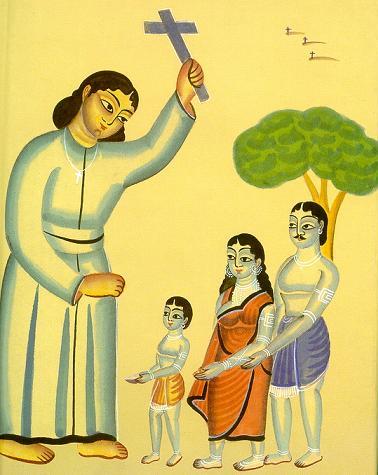 For many, conversion to Christianity or Islam (or considering they are “better” than Hinduism) and the communist brand of secularism (repressing or controlling religion) seem to be the only alternative to a faulty, distorted and degraded understanding of Hinduism.Christians and communists will clamor that Hinduism is a racist religion, backward and based on hatred, and thus unfit to be allowed to continue freely.
For many, conversion to Christianity or Islam (or considering they are “better” than Hinduism) and the communist brand of secularism (repressing or controlling religion) seem to be the only alternative to a faulty, distorted and degraded understanding of Hinduism.Christians and communists will clamor that Hinduism is a racist religion, backward and based on hatred, and thus unfit to be allowed to continue freely.
Thus they will demand a stricter and heavier control over the Hindu temples by the Government officers and the situation will get worse and worse at exponential speed. With the result that, those Indians who are vulnerable to conversion to Christianity or Islam will become even more vulnerable. The rise in the number of converts will in turn create vote banks and increase the political pressure, lobbying and motivated financial investments.
Within the “hindoo” fold, many people think, “Yes, Hinduism is stupid because it has the jati caste system, ignorant priests, backward habits etc, but this is what we have, it is our tradition. This is what our fathers have given us, they must have had some reason to build up such a mass of stuff, so we must keep it like that and protect our tradition.”To most “hindoos” and “brahmins” the idea of actually re-establishing the correct principles of Dharma and Vedic knowledge seems almost outlandish and is rarely taken in consideration.
I use the distorted and degraded spelling “hindoos” and “brahmins” deliberately, to distinguish them from the correct, original and genuine concepts of “hindu” and “brahmana’.The only reform that Hinduism needs is the distinction between dharma and adharma, vidya and avidya, sat and asat – as it has been presented in the original Vedic sruti, and supported by the genuine smriti and acharyas.
This is why I call myself a “orthodox Hindu”.

